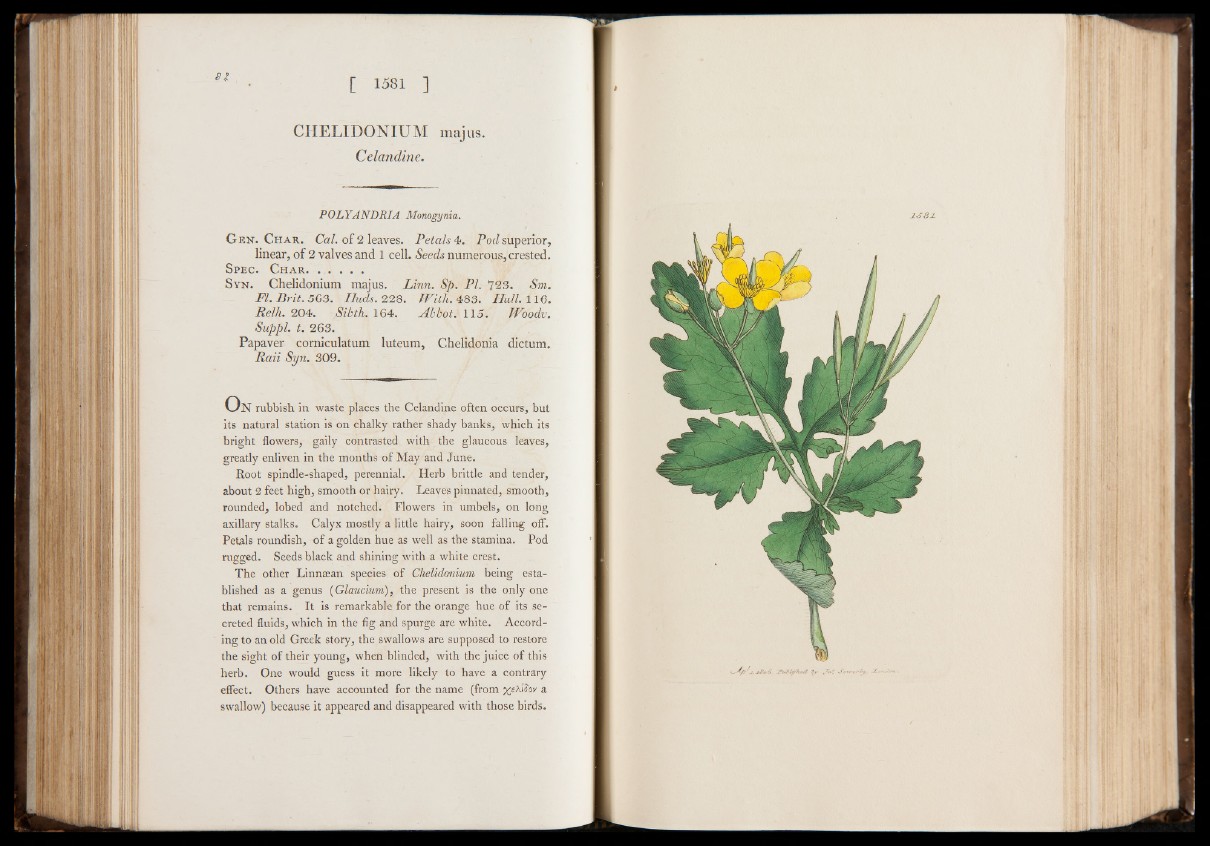
CHELIDONIUM majus.
Celandine.
POLYANDRIA Monogynia.
Gen. Char. Cal. of 2 leaves. Petals 4. Pod superior,
linear, of 2 valves and 1 cell. Seeds numerous,crested.
Spec. Char. ... . . .
Syn. Chelidonium majus. Linn. Sp. PL 723. Sm.
FI. Brit. 563. Huds. 228. With. 483. Hull. 116.
Relh. 204. Sibth. 164. Abbot. 115. Woodv.
Suppl, t. 263.
Papaver comiculatum luteum, Chelidonia dictum.
Raii Syn. 309.
O n rubbish in waste places the Celandine often occurs, but
its natural station is on chalky rather shady banks, which its
bright flowers, gaily contrasted with the glaucous leaves,
greatly enliven in the months of May and June.
Root spindle-shaped, perennial. Herb brittle and tender,
about 2 feet high, smooth or hairy. Leaves pinnated, smooth,
rounded, lobed and notched. Flowers in umbels, on long
axillary stalks. Calyx mostly a little hairy, soon falling off.
Petals roundish, of a golden hue as well as the stamina. Pod
rugged. Seeds black and shining with a white crest.
The other Linnaean species of Chelidonium being established
as a genus (Glaucium), the present is the only one
that remains. It is remarkable for the orange hue of its secreted
fluids, which in the fig and spurge are white. According
to an old Greek story, the swallows are supposed to restore
the sight of their young, when blinded, with the juice of this
herb. One would guess it more likely to have a contrary
effect. Others have accounted for the name (from xe\l$ov a
swallow) because it appeared and disappeared with those birds.